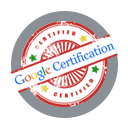You might have invested a lot in website design and development to reach your target audiences to gain traffic. But to understand if your marketing strategies are working or not, you need to track important website metrics.
Here are essential website metrics you need to focus on for improving your conversions.
a) Organic Traffic
This metric will tell you the number of visitors coming to your webpage after performing a Google search. If you want to gain more traffic and visitors, your site needs to be search engine optimized. You’ll also need users to enjoy website content, to like informative blogs and videos.
If this metric is a bit low for your site, try improving the content quality and digital marketing campaigns. Also, look for backlinks from high authority and relevant sites, making your site look more authoritative.
Don’t forget to check out how they’re performing for those of you running Google ads.
b) Bounce Rate
It defines the percentage of people who landed on your website but left immediately without taking any action on the page. The Google Analytics will give you this information. So, if the bounce rate is high, you must focus on keeping visitors hooked.
To reduce bounce rate, you can do the following –
- Make the site user-friendly and easy to navigate
- Have a simple menu button and search bar
- Add engaging videos, blogs, images, and graphics
- Reduce pop-ups and ads
c) Session Duration
This metric tells you the amount of time a visitor spent on your website. The average session duration is around 3 minutes. So, if it’s below that for your site, you need to make the page content more engaging.
Visitors will automatically spend more time online if your website has exciting products/services, engaging videos, or interesting content.
For instance, if you post an informative blog article, visitors will read it till the end. Therefore, this will directly improve the session duration.
d) Major Traffic Source
It is an important metric used in digital internet marketing that tells you the primary source of your traffic. It can include social media platforms, targeted emails, or Google ads.
By combining this information with the session duration, you can better understand your audience.
Suppose your primary traffic source is targeted emails, and the visitors coming from here have longer session durations. So, it means that your email marketing is successful!
e) Device Metrics
You can also track the type of devices your audience uses to access your website. It can include a smartphone, laptop, tablet, or desktop computer. In addition, you can also look at the operating systems and browsers your site visitors use with this metric.
Based on the information, you can update your website design, navigation, and content quality to attract more visitors.
f) Page Loading Time
Whether you are a reputed organisation or a new startup, your official website must load fast. Remember that visitors will leave your website if it takes over 4 seconds to load.
If your page speed is low, you can hire professional website development companies like BluWebMedia to improve the page speed by optimizing images, CSS, enabling browser cache, etc. Also, try to detect and remove any unnecessary site content that can make the web page fast loading.
A faster website will get you more visitors and enhance traffic!
g) Returning Visitors
If your website fetches a lot of organic traffic, then the number of returning visitors might be high. So, this website metric shows the number of visitors who come back again and again to your site.
- If you have few returning visitors, you can enhance the web copy by adding high-quality images, short videos, games, or quizzes.
- For product-based websites, you have to improve the quality of products or services you’re offering.
h) Page Views Per Session
This metric tells you the average number of web pages visitors access on your website. You’ll understand which pages or content your audience prefers.
You can increase the page views per session by adding internal website links. As a result, visitors will check out other pages during each session.
i) Click-Through Rate
Click-Through Rate (CTR) tells you how many clicks are received on your website against display of search engine ads or display of your website on the SERP. If this metric is high, you can rejoice as your advertisements, keywords, and web content are performing well!
On the contrary, if this number is low, you need to make your web content more interactive. Try adding buttons with attractive Call-To-Actions (CTAs) at the end of articles or videos—that’ll make anyone click on it!
j) Conversion Rate
Perhaps the most important and well-loved metric, it tells you how many visitors got converted into customers. If your products and associated web content are valuable, visitors are bound to come back for more.
Google Analytics will let you know if a user filled out a form, purchased a product, or signed up for a newsletter.
Summing Up
The ultimate aim of understanding these metrics is to improve your website performance. So, besides improving your SEO, ad campaigns, or videos, examine the content quality on your website.
Always look for ways to improve the content and provide more value to the customers. If you didn’t get satisfactory results before, you can always reach out to an experienced web development agency.












